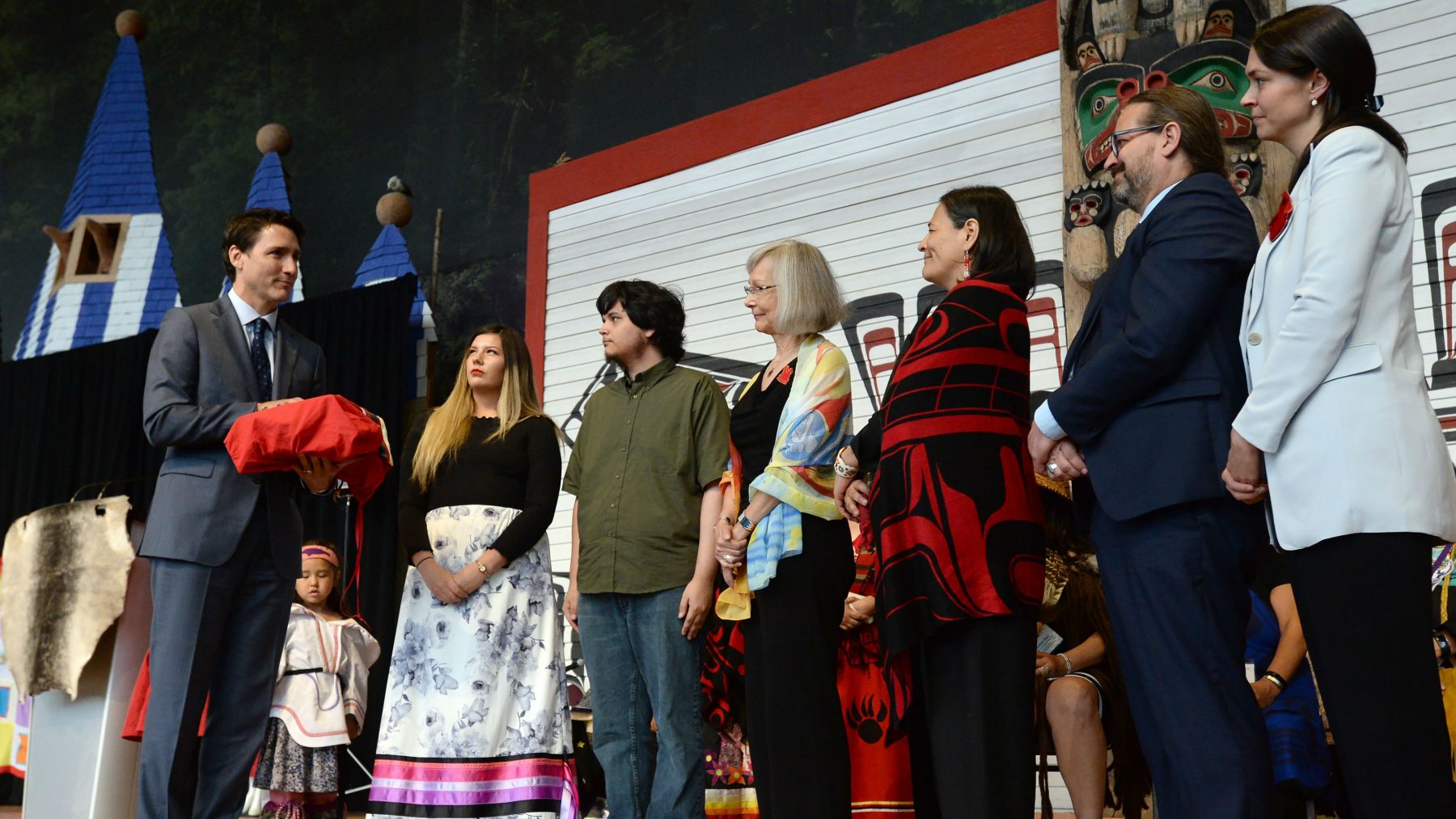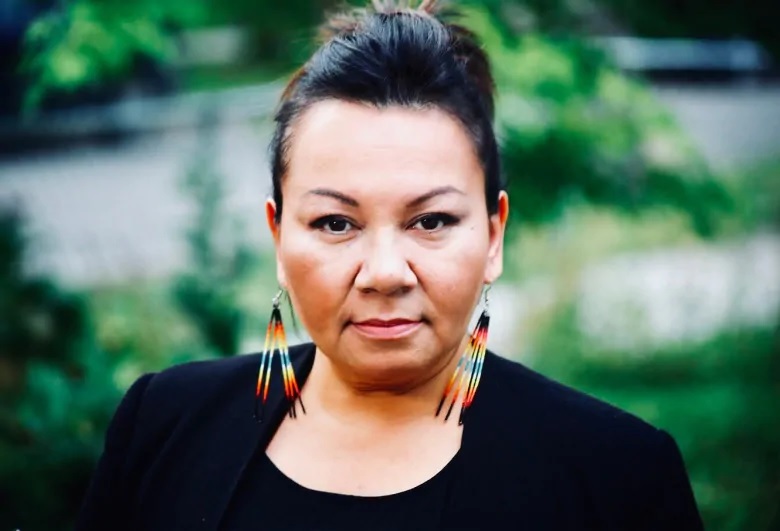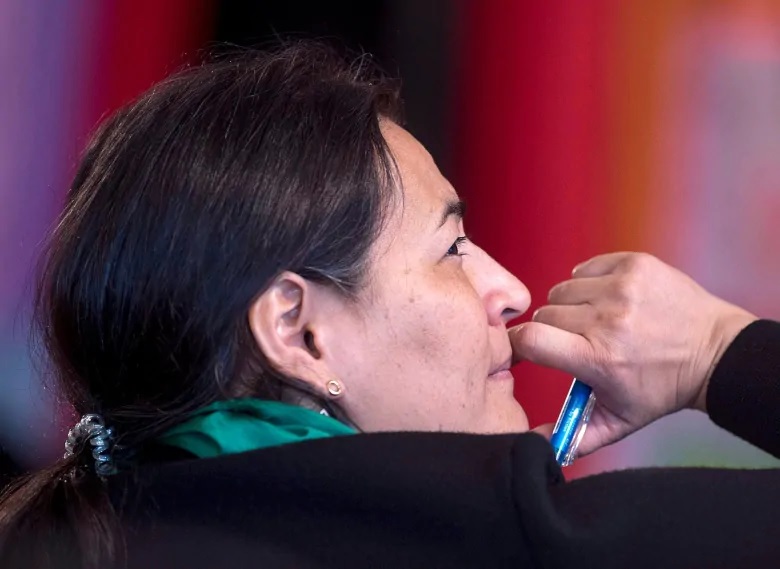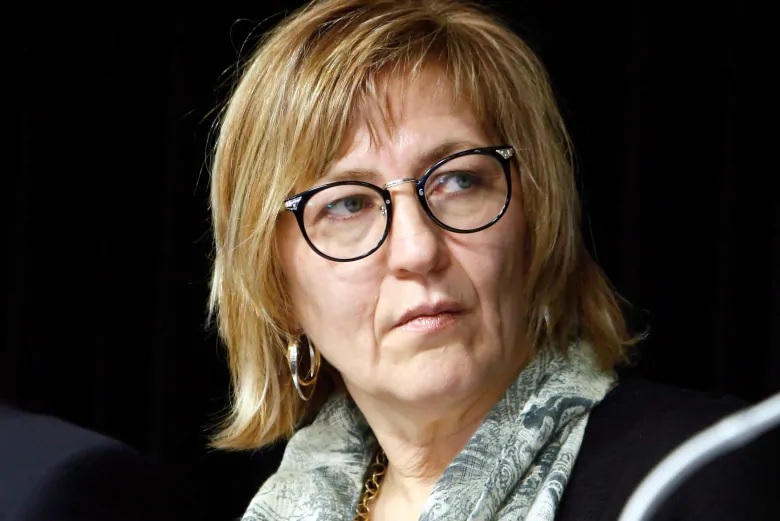Violence against Indigenous women in Canada: final report altered to fix error

The MMIWG national inquiry overstated in its final report the percentage of Canadian homicide victims who are Indigenous women and girls by misquoting a figure from Statistics Canada — and later quietly altered the report online after CBC News raised questions.
The error, which was confirmed to CBC News by the inquiry’s director of research, occurred when the commission left out a word that had appeared in the original Statistics Canada figure.
The statement “Indigenous women and girls now make up almost 25 per cent of homicide victims” should have referred to their percentage share of female homicide victims — which is a smaller number of people.
It’s one of a number of statistics in the inquiry report on missing and murdered Indigenous women and girls (MMIWG) that appear to conflict with numbers collected by the government of Canada, or with other numbers in the same report. In some cases, the inquiry report’s footnotes cite government reports that do not support the footnoted statements.
And the error was subsequently corrected in the online version of the report, without giving public notification.
The errors are ones of degree and ultimately don’t change one of the main findings of the inquiry — that Indigenous women and girls suffer higher rates of violence and homicide than non-Indigenous women and girls.
“We have to look back at the bigger picture of the whole issue,” said former Manitoba grand chief Sheila North, who has been critical of the inquiry, when CBC first discovered the error. “While there have been missteps, I think that it does still speak to the realities of what Indigenous women and girls face in this country.”

Report quietly altered
The inquiry, which heard testimony from hundreds of witnesses and families of missing women and made international headlines when it accused Canada of genocide, presented its report to the public on June 3.
CBC News first contacted the inquiry commission on June 6 to ask about discrepancies in figures and statistics. In the course of several communications with the commission over the subsequent nine days, it acknowledged one error while denying others.
When asked whether the commission would make corrections and acknowledge the errors, its director of communications Catherine Kloczkowski did not respond or reply to any further messages.
One week after that final communication, the commission changed the hyperlink on its website without acknowledging the change. Instead of directing readers to the original report, the link now leads to a new website where there is a modified version of the report — different from the one printed by Publications Canada. (Note: the security certificates for these government websites seem to have expired, meaning they may be initially blocked for some users by their web browsers.)
The corrected report appeared online on June 22, 19 days after the original report was presented to the public. The old, uncorrected report continued to exist on a different website, but no longer had a live link to it.
No erratum or acknowledgement of changes accompanies the new report. There was no public notification of the fact that there are now two versions of the final report in circulation — nor has there been any attempt to reprint the original copies.
Official record allowed to remain
The commission also has not replaced the original, erroneous report filed with Library and Archives Canada. So the government’s official record of the commission’s findings still contains the errors and contradictions discovered by CBC News.
Prime Minister Justin Trudeau received his copy of the report on June 3 at a ceremony in Gatineau, Quebec, and committed the government to acting on its findings. CBC News asked the Prime Minister’s Office if the commission had ever attempted to replace the original copy, or inform the PMO of the revisions it had made. A spokesman said “all I can say for the PMO is that the PM was presented a copy at the June 3 event.”
Moreover, the version of the report being offered to the public through Amazon is still the original, uncorrected version.
On Aug. 27, CBC News asked MMIW Commissioner Michele Audette if there had been any revision of the numbers, or any consideration given to publication of errata. She did not respond.
Errors don’t change grim picture
The introduction to the MMIWG inquiry final report says that taking a long-term view, using statistics going as far back as the 1980s, “can be misleading: this number represents an average over a long time span, which obscures the increasing severity of the problem — namely, that Indigenous women and girls now make up almost 25 per cent of homicide victims.”
That 25 per cent statistic carries a footnote linking to a 2017 Statistics Canada report: Women and the Criminal Justice System, by Tina Hotton Mahony, Joanna Jacob and Heather Hobson.
However, that report says Indigenous women in 2015 accounted for 24 per cent of female homicide victims, not of overall homicide victims. (Most homicide victims are male.)
The national MMIWG inquiry’s director of research, Karine Duhamel, acknowledged that “we should have said ‘of female homicide victims.'”
CBC News examined government homicide statistics for the past four years and concluded that the percentage of murder victims who are both Indigenous and female was lower: slightly under six per cent of all victims.
Presented with the calculations, Duhamel acknowledged that “while we haven’t seen that six per cent figure used before, it seems about right.”
“Those of us that have been working in this field for a very long time know that,” said Dawn Lavell-Harvard, president of the Native Women’s Association of Ontario and head of the First Peoples House of Learning at Trent University.
“One has an expectation that any kind of report is going to be accurate, and it’s actually a real tragedy that this kind of mistake was made, because it is going to distract from the very real conversation about the over-representation of Indigenous women and girls.”
Lavell-Harvard noted that even if the figure is six per cent and not 25 per cent, it’s still a disproportionately high homicide rate for a group that accounts for only 2.5 per cent of the Canadian population.
Mismatched numbers
That’s not the only figure in the final report that was corrected online.
In her preface to the report, Audette writes “statistics show that Indigenous women and girls are 12 times more likely to experience violence than non-Indigenous women.”

It’s the very first statistic or figure quoted in the final report.
But the StatsCan publication Women and the Criminal Justice System, cited extensively by the national inquiry, says that “Aboriginal females reported experiencing violent victimizations at a rate 2.7 times higher than that reported by non-Aboriginal females.”
Asked about the two figures in June, Audette told CBC News she was comfortable with the “12 times” figure.
“With this inquiry, we were on the ground, we were with the families,” she said. “Sometimes we were able to see that numbers don’t connect to the reality on the ground.
“There’s places I went where teachers would say to me, ‘In my class there’s 35 children, or 25 or 15, and 100 per cent of them, once in their lives, suffered either sexual violence of physical violence.’
“So it was, for me, a comfortable number — sad to say that — but a number that I can say for sure, it’s a minimum of 12 (times).”
However, that reference was subsequently changed online; it now reads, “statistics show that Indigenous women and girls are 12 times more likely to be murdered or missing than any other woman in Canada.”
The report says that assertion is based on numbers presented in “the true crime documentary series TAKEN“, produced by Anishinaabe filmmaker Lisa Meeches.
StatsCan changes approach
Historically, Canadian statistics did a poor job of tracking the Indigenous status of both victims and accused. Many police departments didn’t include such information in the reports they submitted to the RCMP.
About six years ago, Statistics Canada began to change the way it counted Indigenous victims in response to public pressure to produce better data on the topic. Since then, Canada’s annual homicide report has included detailed breakdowns by Aboriginal status and gender, for both victims of crime and offenders, and for each province and territory.
By 2014, Statistics Canada was reporting that it had succeeded in lowering the share of cases where Indigenous status was unknown to three per cent. The four full crime reports StatsCan has produced since 2014 have documented 2,381 deaths by homicide in Canada, including 655 victims who were female.
Those detailed reports show that in the four years from 2014 to 2017, 138 Indigenous women were slain and 142 were charged with homicides. Indigenous women made up 5.8 per cent of Canada’s homicide victims.
Although the last of those four reports was published more than six months before the Commission issued its report, the inquiry made little use of the newest data. Commissioner Audette reached back 20 years in her preface to the report: “According to Statistics Canada, between 1997 and 2000, homicide rates for Indigenous women were nearly seven times higher than for non-Indigenous women.”
Audette said the decision to not use the more recent stats was partly due to a lack of time — but also due to a lack of confidence.
“You can see the numbers are very low, but the rate of violence is way high. So this is where sometimes the number doesn’t represent the reality.”
In the new version of the report posted online, Audette’s preface has been revised to instead refer to StatsCan numbers from 2001 to 2015 — which still show disproportionately high violence against Indigenous women, though rates have declined slightly.
Jane Deeks of the Department of Crown-Indigenous Relations and Northern Affairs Canada told CBC News:
“There is no question that Indigenous women, girls and LGBTQ and two-spirit people are among the most vulnerable people in Canada, and face disproportionate rates of violence. Our focus remains clearly on how we can change this. The National Inquiry’s final report is a crucial step in this work.”
‘How many is enough?’
Even critics of the MMIWG inquiry say it shouldn’t be judged only by the reliability of its numbers.

Former commissioner Marilyn Poitras, who resigned from the inquiry in 2017, told CBC News that “the discrepancy between 25 per cent and 6 per cent is absolutely worthy of discussion, only because it begs the question: how many dead Indigenous women is enough or too many for this to be a Canadian public safety issue?”
“Nothing surprises me about this inquiry,” said North. But she cautioned that the errors should not obscure the overall picture.
“The numbers may be skewed and that should never have happened,” she said, “but at the same time, none of the deaths should ever have happened, and none of our women and girls should be missing in the first place.
“We have to figure out where we as individuals stand in making sure that everyone feels safe in a rich country like Canada.”
For immediate emotional assistance, call 1-844-413-6649. This is a national, toll-free 24/7 crisis call line providing support for anyone who requires emotional assistance related to missing and murdered Indigenous women and girls. You can also access long-term health support services such as mental health counselling and community-based cultural services through Indigenous Services Canada.
Related stories from around the North:
Canada: Violence against Indigenous women: Northwest Territories gov not yet committing to recommendations, CBC News
Finland: Number of reported domestic violence cases rises in Finland, Yle News
United States: U.S. Attorney General hears from Indigenous leaders about justice problems in rural Alaska, Alaska Public Media



